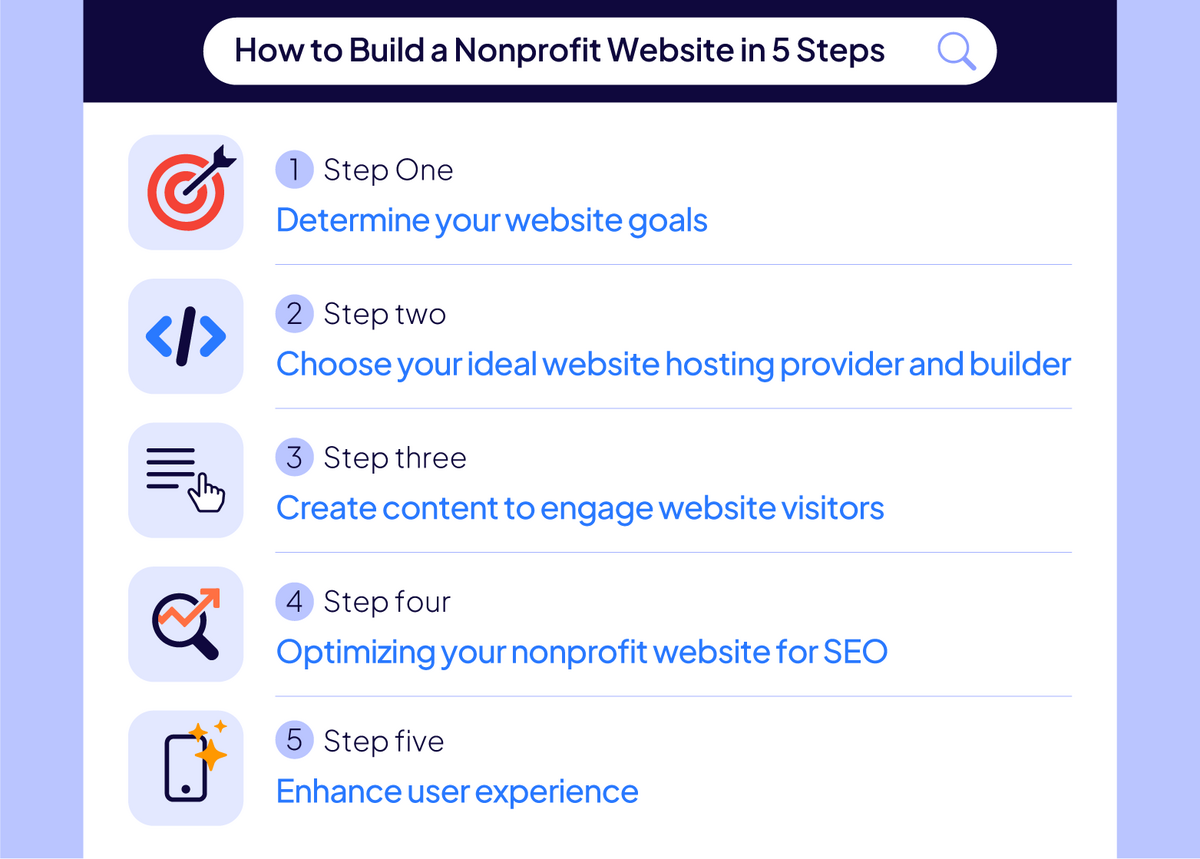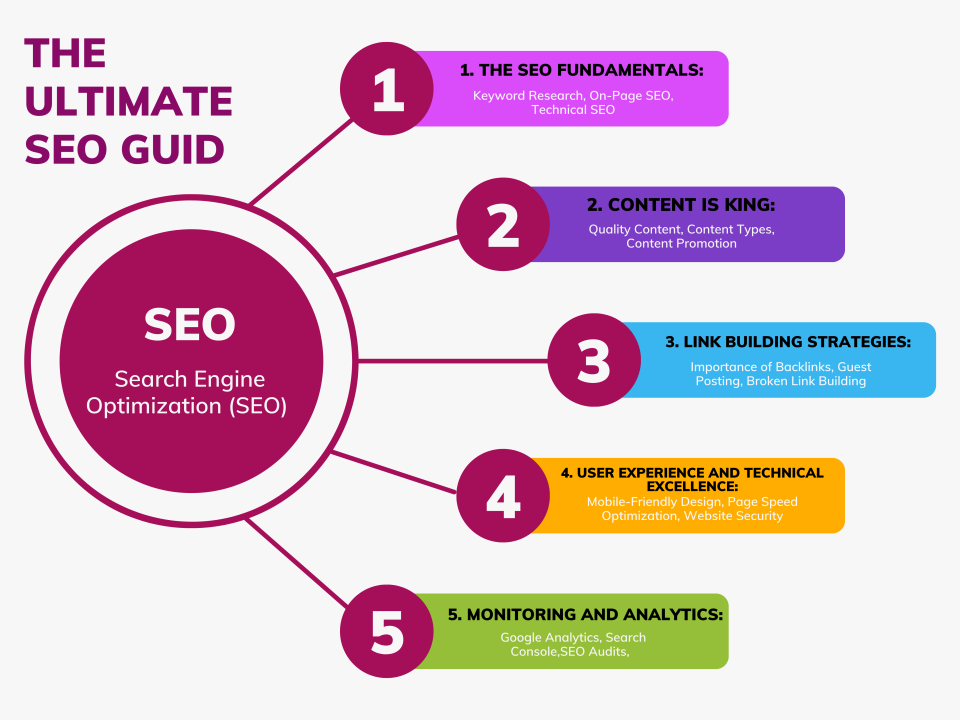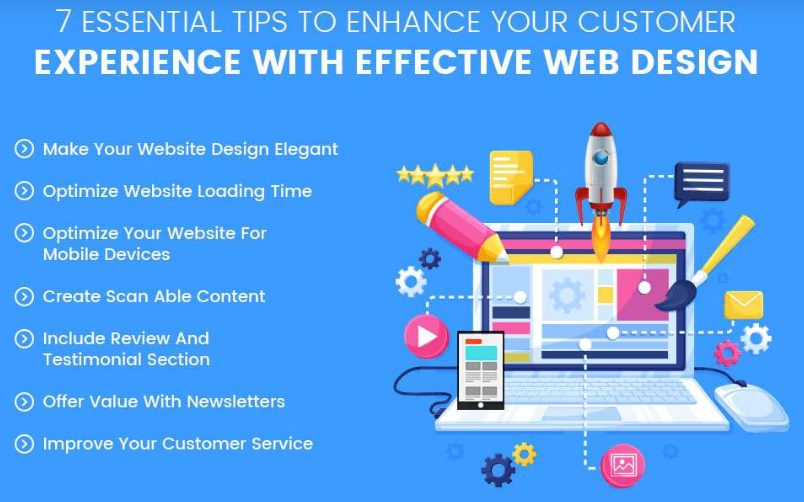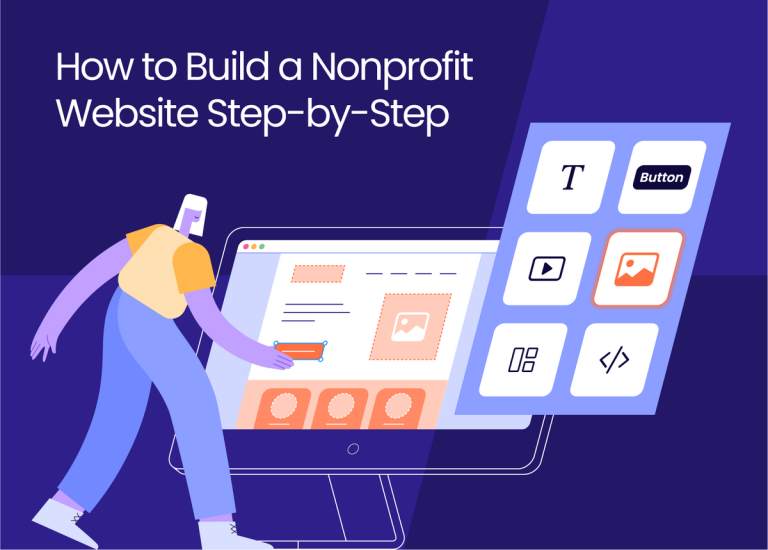Have you ever wondered why some nonprofit websites seem like donor magnets while others barely get any traffic? Well, it turns out there’s a bit of know-how involved. When you think about how to build a nonprofit website, it isn’t just about throwing up some text and images; it requires strategy, insight, and, yes—a little creativity.
In today’s digital age, having an online platform for your charity or non-profit organization is no longer optional—it’s crucial. But don’t sweat it if coding sounds as foreign as hieroglyphics or if budget constraints have got you second-guessing this move. From choosing the right builder without breaking the bank to crafting content that resonates with potential donors—we’ve got all bases covered.
This blog is going to walk you through the essentials of how to build a nonprofit website that not only looks good but also engages visitors, drives donations, and helps you further your cause. We’re going to cover:
- How to Build a Nonprofit Website in a Few Essential Steps
- Integrating Social Media into Your Nonprofit’s Online Presence
- Incorporating Online Donations and Fundraising Tools
- Maintaining and Updating Your Nonprofit Website
- Stop Thinking About How to Build a Nonprofit Website and Dive In
How to Build a Nonprofit Website in a Few Essential Steps
Building a nonprofit organization’s website that actually works for your organization is key. But where do you even start?

Step One: Determine your website goals
First things first: determine your website goals. The only way you can start optimizing site impact is to be clear on what you want that impact to be.
What do you want your site to accomplish? Get crystal clear on this before moving forward. It could be any of the following:
- Raise awareness in your community
- Attract prospective donor families and potential volunteers
- Engage supporters
- Support online marketing initiatives
- Collect donations
- Provide usable forms for registrations (i.e., events, programs, etc.)
- Host educational resources and organized content
- Distribute news outside email newsletters
- Get new newsletter registrants
- A place where people contact you
There are a wide range of goals your organization may have when it comes to your effective website development plan! Be sure to involve all key stakeholders and write down your goals in a way that can be communicated easily.
Step two: Choose your ideal website hosting provider and builder
Next up, choose the right web hosting platform and builder. But what the heck is the difference? And where do you even begin in the vast expanse of the World Wide Web?
Let’s break it down.
Website host
A website host provides the infrastructure and server space necessary to store and serve the files that make up a website. When you create a website, you need a place to store all the files (HTML, CSS, JavaScript, images, etc.), install plugins, and website content that make up your site, and a website host provides that storage space. Website hosts also provide other services such as domain registration, email hosting, security features, and technical support.
Examples of website hosts include HostGator, Bluehost, and GoDaddy.
Website builder
A website builder is a platform that allows users to create and design websites without needing to write code or have advanced technical skills.
Website builders typically offer drag-and-drop interfaces that require no coding knowledge, pre-designed templates, and customization options that make it easy for users to create and customize their websites. Users can choose from a variety of website theme and template options, add content, customize layouts, and manage their sites using a visual editor.
Common nonprofit website builders sometimes include hosting as part of their paid plans, so users don’t need to purchase hosting separately.
Examples of website builders include WordPress.com, Wix, Squarespace, and Weebly, and here are some of the features:
- Stratly – designed for nonprofit organizations, highly customizable, beautiful templates
- WordPress – highly customizable, tons of plugins
- Squarespace – beautiful templates, easy to use
- Wix – drag-and-drop design, nonprofit-specific features
- Weebly – affordable, user-friendly
Plans include different features, so be sure to explore them before the building website process commences!
What to consider as a nonprofit organization
When nonprofit organizations are starting a website project and looking at nonprofit website builders, you want to consider factors like:
- Ease of use
- Customization
- Cost
- Responsive design options
- Customize the color scheme (branding, friend!)
- Fast speed for downloads and uploads
Remember, your professional website often gives people the first impression of your organization. Make it count, but remember it doesn’t need to be a complex website to create impact.
Some builders offer discounted or free plans for registered nonprofits. Compare pricing tiers and watch out for limitations on lower-cost plans. They may even have templates designed for nonprofit use.
Step three: Create content to engage website visitors
A nonprofit website without engaging content is like a book with blank pages. Pointless, right?
So, how do you create content that captivates visitors?
Start building with your mission statement.
Craft a compelling, concise summary of your nonprofit’s purpose. So, don’t bury the lead – slap it right there on your homepage for everyone to see. Make people care!
Success stories are another powerful tool. Share real-life examples of your impact via compelling storytelling.
Showcase the people and communities you’ve helped. Use photos, videos, and quotes to bring these stories to life.
Other content ideas:
- Blog posts about your cause, industry news
- Infographics showcasing your impact
- Interviews with staff, volunteers, donors
- Behind-the-scenes photos and videos
Remember, your content should educate, inspire, and drive action. Make it count.
Step four: Optimizing your nonprofit website for SEO
You’ve built a stunning nonprofit website with killer content. But is anyone actually seeing it?
That’s where search engine optimization (SEO) comes in. Search engines are platforms like Google or Bing. Even Pinterest or YouTube could be considered search engines too.
SEO helps your site rank higher in search results. Higher rankings = more visibility = more traffic. But how do you optimize for SEO?
Some SEO best practices:
- Research and use relevant keywords in your content.
- Optimize page titles, headings, and meta descriptions.
- Make sure your site is mobile-friendly and loads quickly.
- Build high-quality backlinks from reputable websites.
- Use descriptive, keyword-rich URLs for your pages.
- Install SEO plugins to support.

SEO can feel overwhelming, but SEO plugins like Yoast SEO make it easier. It analyzes your content and provides suggestions for improvement.
Keep in mind, playing the SEO game is more of a marathon than a sprint, but it’s perhaps one of the most important things to learn when discovering how to build a nonprofit website. It takes time and consistent effort to see results. But trust us, it’s worth it.
Step five: Enhance user experience
If you’re wondering how to build a nonprofit website, but not paying attention to how people interact with it, you’re missing a key step. You want to make sure that everyone, regardless of ability, can easily navigate and interact with your site.
This means designing for accessibility, following the Web Content Accessibility Guidelines (WCAG). Consider features like alt text for images, keyboard navigation, and sufficient color contrast.
Usability is also key. Make sure your website feels like a breeze to navigate for everyone who drops by. Organize content logically, use clear calls to action, and simplify forms and donation processes.
Mobile responsiveness is non-negotiable in today’s world. With more than half of internet traffic coming from mobile devices, your site must look and function beautifully on smartphones and tablets.
Conduct user testing to identify any pain points and make iterative improvements. We aim to make getting around as smooth as butter and ensure using our site is a breeze, all so you feel more like sticking around and supporting what we do.

Integrating Social Media into Your Nonprofit’s Online Presence
Social media integration is not just for small businesses; it’s also a must for expanding your nonprofit’s online presence. Include prominent social media links on your website and encourage visitors to follow your accounts.
Embed social media feeds or share buttons to make it easy for visitors to interact with your content. Develop a social media strategy that aligns with your website goals.
Share blog posts, success stories, and calls to action on your social channels to drive traffic back to your site. Engage with followers and respond to comments and messages to build relationships and trust.
By connecting your website to social media, you create a cohesive online presence that amplifies your reach and impact. Plus, social proof from likes, shares, and comments can boost your credibility and attract new supporters.
Incorporating Online Donations and Fundraising Tools
For most nonprofits, accepting online donations and running fundraising campaigns are essential functions of their website. Choose a platform that integrates with trusted donation processing tools like PayPal or Stripe.
Keep an eye out for nifty features like the ability to set up donations that keep on giving, forms you can tweak to your heart’s content, and tax receipts that pop into your inbox automatically. Make the donation process as simple and seamless as possible to maximize conversions—make that donate button BIG.
Consider adding fundraising tools like crowdfunding campaigns, peer-to-peer fundraising pages, or online auctions to engage supporters and diversify your revenue streams.
To encourage participation, ensure these tools are easy to use and mobile-friendly. Promote your fundraising campaigns across all marketing channels to drive traffic and donations.
By incorporating robust online giving options, you make it convenient for supporters to contribute to your cause. Plus, you can track and analyze donation data to optimize your fundraising strategies over time.
The best way to make this simple?
Maintaining and Updating Your Nonprofit Website
Building a successful nonprofit website is not a one-time project – it requires ongoing maintenance and updates to stay relevant and effective. Regularly review your content and remove or update any outdated information. Add new blog posts, success stories, and resources to keep visitors coming back.

Monitor your website analytics to track performance and identify areas for improvement. Test different calls-to-action, landing pages, or design elements to optimize for conversions. As your nonprofit grows and evolves, your website should too – consider a redesign every few years to keep your site fresh and aligned with your goals.
Maintaining a website does require some technical expertise, so make sure you have the right resources in place, whether that’s a staff member, volunteer, or outside consultant. Many website builders also offer customer support and training resources to help you troubleshoot issues and make updates.
Common website plans for nonprofits include:
- Regular content updates
- SEO optimization
- Security and plugin updates
- Backups and site maintenance
- Analytics tracking and reporting
Don’t let your website become stagnant or outdated. Keep it up-to-date with fresh content, design tweaks, and technical improvements to ensure it remains a powerful tool for advancing your mission and engaging supporters.
Remember, when you think about how to build a nonprofit website, your website is often the first point of contact for potential donors, volunteers, and beneficiaries. Let it shine with the professionalism and influence your organization brings to the table.
Stop Thinking About How to Build a Nonprofit Website and Dive In
So there we have it, every essential tidbit on how to build a nonprofit website wrapped up neatly with a bow on top. Remember though—while creating one might seem straightforward now—the real magic happens when these tips are put into practice.
Whether you’re a food bank, an association, a community center, a university, or any nonprofit—a professional-looking website matters.
So go ahead! Let what you’ve learned fuel actions toward cultivating an online space where people can connect deeply with your mission—and together—you’ll weave stories of change worth clicking for.
If you need a partner to help you manage your nonprofit website and streamline it for success, schedule your Stratly demo today.

